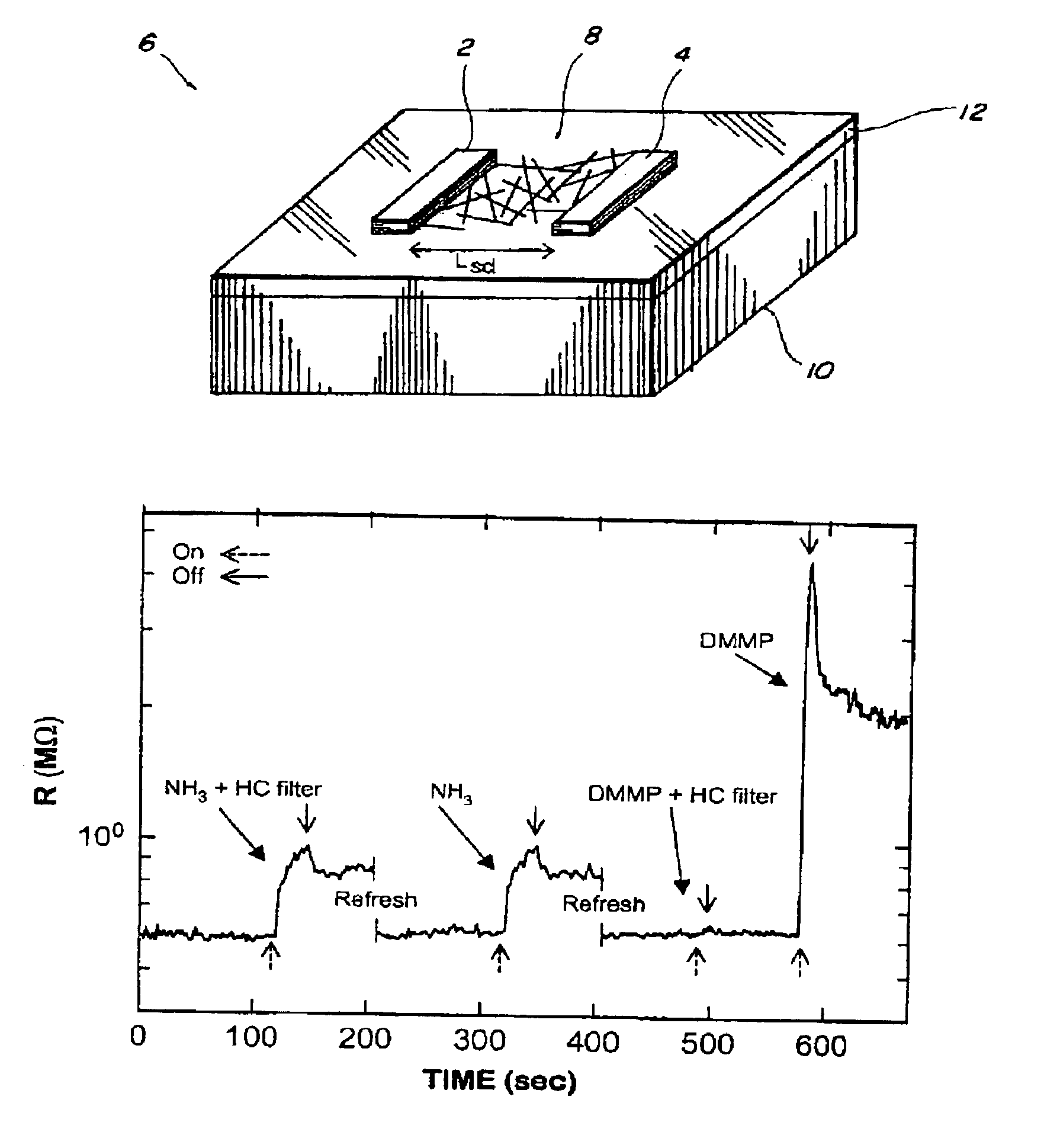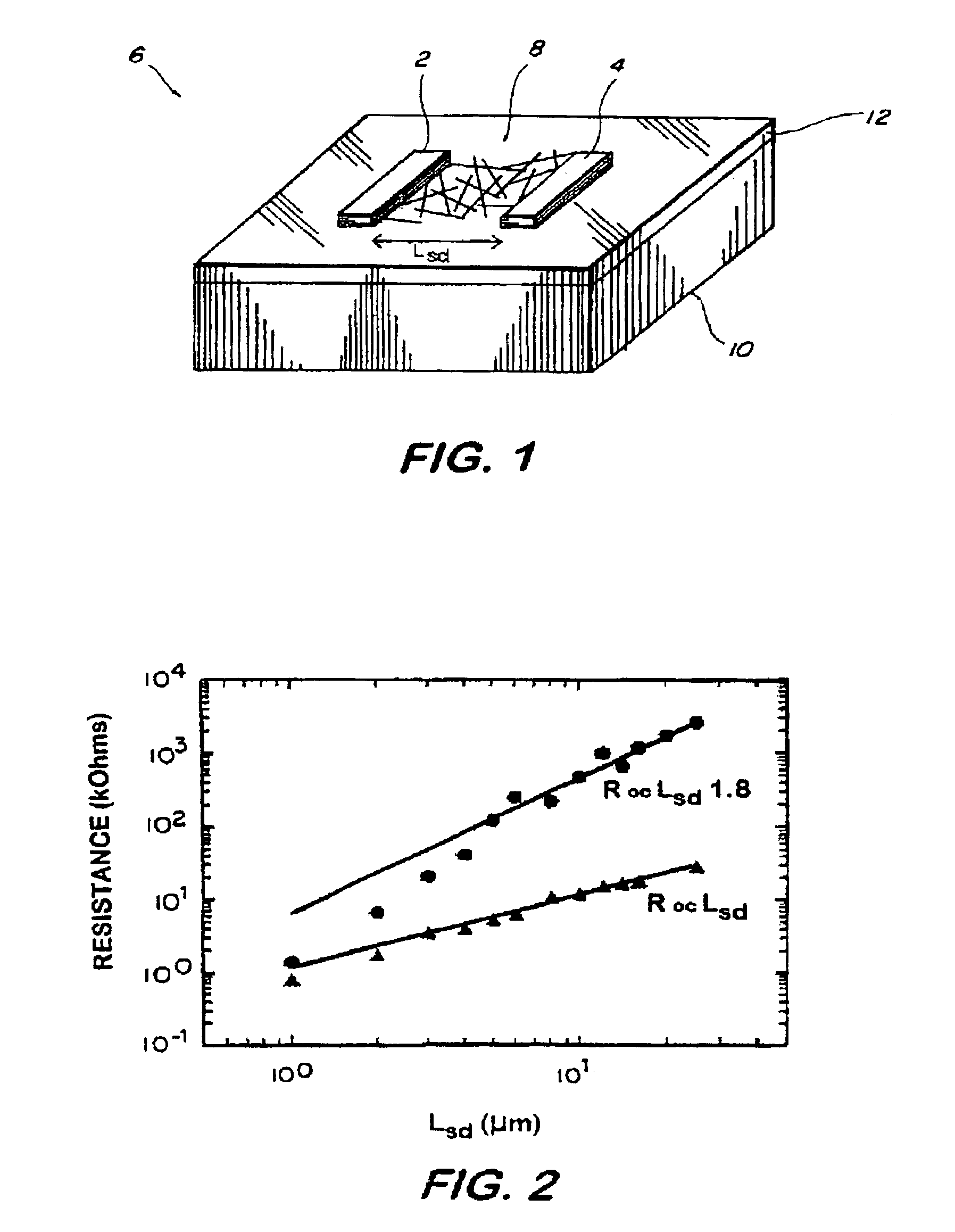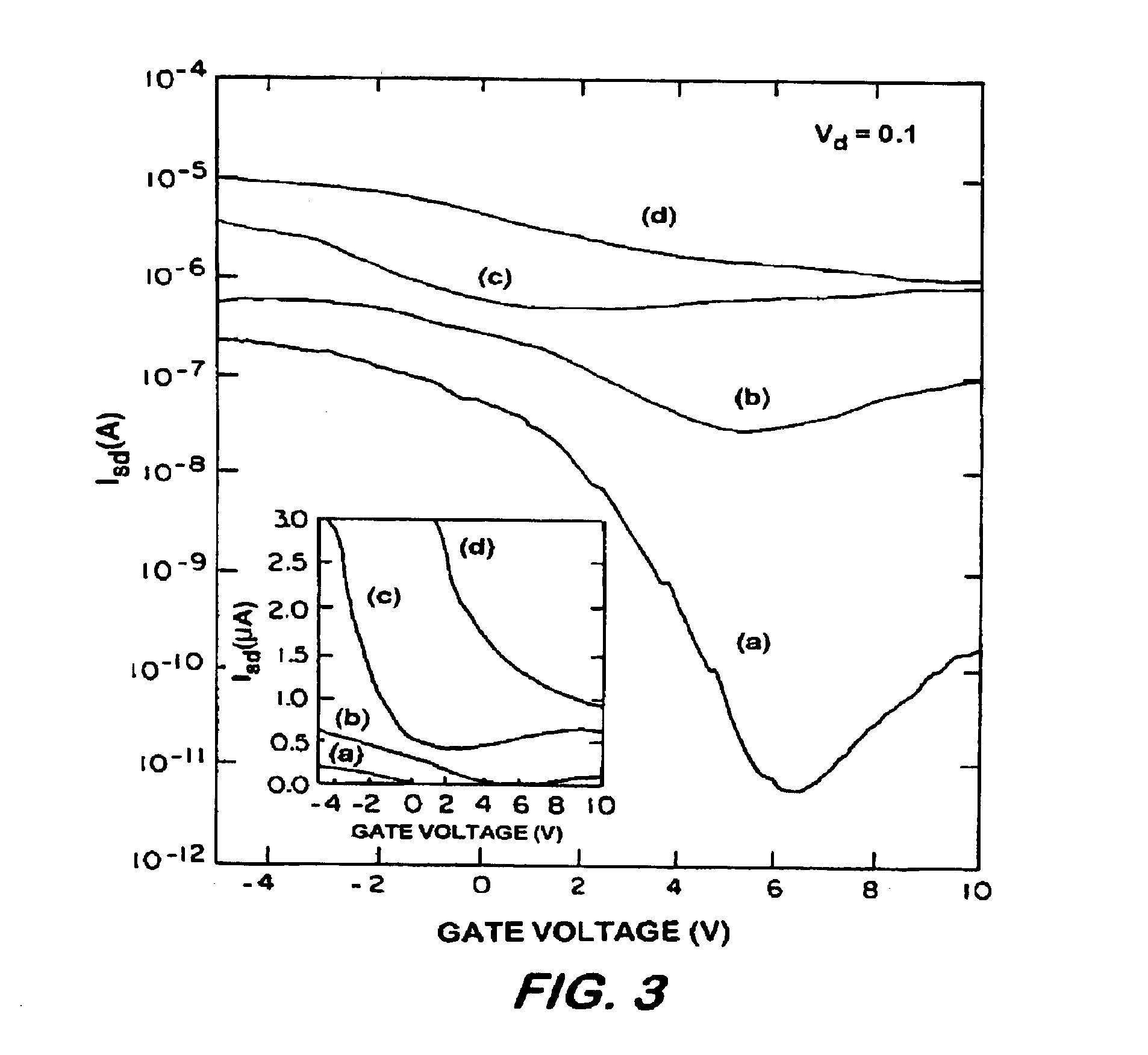Interconnected networks of single-walled carbon nanotubes
a single-walled carbon nanotube and interconnected technology, applied in nanoinformatics, instruments, specific gravity measurement, etc., can solve the problems of lack of position and orientation control, major obstacles to commercial electronic applications, lack of precise atomic structure of swcnt control,
- Summary
- Abstract
- Description
- Claims
- Application Information
AI Technical Summary
Benefits of technology
Problems solved by technology
Method used
Image
Examples
example 1
[0039]Formation of interconnected networks—An iron-based catalyst for the nanotube growth was deposited on a Si wafer with a 250-nm-thick thermal oxide by dipping the substrates in a ferric nitrate nonahydrate isopropanol solution for 10 s followed by a 10 s rinse with hexane. The density of nanotubes was controlled by varying the concentration of the catalyst solution from 1.5 to 150 mg / L. Immediately after catalyst deposition, the samples were placed into a furnace and purged with a mixture of argon and hydrogen. The samples were then heated to 800° C. and annealed for 30 min. SWCNT growth was initiated by the introduction of ethylene (5 cm3 / min) into the Ar (600 cm3 / min)-H2 (400 cm3 / min) carrier gas flow for 10 min. The samples were then cooled in flowing Ar gas.
example 2
[0040]Fabrication of transistors—A schematic of the device is shown in FIG. 1. Source 2 and drain 4 electrodes were fabricated on the substrate 6 having the network 8 from Example 1 using optical lithography and lift-off of a 150-nm-thick Ti film. The regions of the devices between the source-drain electrodes were then covered with photoresist and the nanotubes outside this protected area were removed by using a CO2 snow jet. Finally, the protective photoresist was removed. The Si wafer 10, having a SiO2 layer 12, was used as the gate. The device geometry was varied with the source-drain channel length, Lsd, ranging from 1 to 25 μm and the channel width, W, ranging from 35 to 100 μm. An atomic force microscope (AFM) image of a CNT network in the region between the source-drain electrodes was made. Such images and AFM line profiles were used to determine the diameter (d), density (ρ), and length (L) of the nanotubes where ρis defined as the number of CNTs per unit area. For these gro...
example 3
[0041]Electrical properties of transistors—The transistors from Example 2 were tested in a vacuum probe station. Networks were electrically conducting for CNT densities exceeding ˜0.3 μm−2. For most of the devices, the average nanotube length, , was much shorter than Lsd, which means that the source-drain current flowed through a series of inter-nanotube contacts.
[0042]The geometric scaling of the device resistance is shown inFIG. 2 which plots the log of the source to drain resistance versus log(Lsd) for two sets of devices corresponding to ρ=10 and 1 μm−2. The resistance data for the 10 μm−2 network scaled linearly with channel length with a sheet resistance of 108 kΩ / square. The resistance data for the 1 μm−2 network scaled nonlinearly with channel length, and a least squares power law fit to the data for Lsd≧5 μm yielded R∝L1.8. This nonlinear scaling is an indication that the network is approaching the percolation threshold where nonlinear effects are expected. Note that the sh...
PUM
| Property | Measurement | Unit |
|---|---|---|
| thick | aaaaa | aaaaa |
| thicknesses | aaaaa | aaaaa |
| concentration | aaaaa | aaaaa |
Abstract
Description
Claims
Application Information
 Login to View More
Login to View More - R&D
- Intellectual Property
- Life Sciences
- Materials
- Tech Scout
- Unparalleled Data Quality
- Higher Quality Content
- 60% Fewer Hallucinations
Browse by: Latest US Patents, China's latest patents, Technical Efficacy Thesaurus, Application Domain, Technology Topic, Popular Technical Reports.
© 2025 PatSnap. All rights reserved.Legal|Privacy policy|Modern Slavery Act Transparency Statement|Sitemap|About US| Contact US: help@patsnap.com



